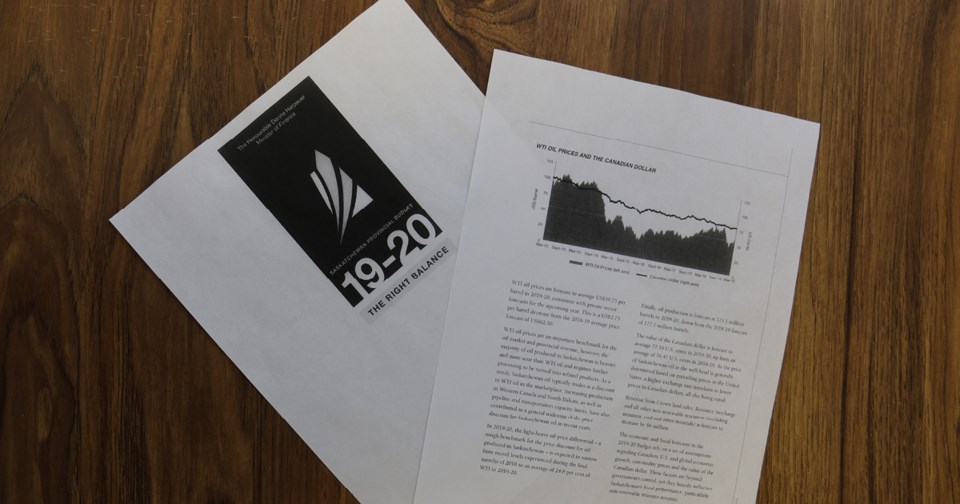HUMBOLDT — The provincial government has delivered a budget with a small surplus that will include some planning for Highway #5 improvements.
Expenses are projected to be $14.99 billion in the 2019-20 budget year, while revenues are expected to be $15.03 billion, leaving a surplus of $34.4 million.
“This budget contains no new taxes or tax increases, so it’s the right balance to keep our economy strong,” said Donna Harpauer, the finance minister. “It balances much-needed investments with carefully managed spending in order to achieve a balanced budget that is affordable and sustainable, now and in the years ahead.”
The budget is devoting a total of $60 million to begin, continue or complete highway twinning or passing lanes. One of the five projects on that list will be to plan passing lanes and other safety improvements on Highway 5 west of Saskatoon.
“I do know there’s money in the budget to advance the passing lanes from Highway 2 to Saskatoon,” said Harpauer, who serves as the MLA for Humboldt-Watrous. “They also want to widen the highway in areas.”
There will also be $13 million this year devoted to improve rural intersections. There will be $65 million provided over five years.
The province is making changes to its potash royalty regime. Potash companies will no longer be able to deduct the Saskatchewan Resource Credit and the Crown and freehold royalties on their base payment or profit tax. This will generate an extra $117 million for the province
Harpauer said they decided to make the change because potash prices and sale projections are forecast to be strong and the incentives did their job in encouraging expansion.
“So that was our time to, I think, ensure is that Saskatchewan people are benefiting from what is their resource.”
With that change, the effective tax rate will increase from 6.9 per cent to 9.3 per cent, the rate it was in the early 2000s.
Heath care will see a 2.1 per cent spending increase to $5.89 billion and includes funding for 140 new beds for mental health and addictions treatment. There will also be an extra $700,000 devoted to the Autism Individualized Funding benefit, increasing the benefit from $4,000 to $6,000 per year for children under age six.
School divisions will receive $1.90 billion, an increase of 1.4 per cent, while libraries will see a $128,000 increase in their budget to $11.2 million.
Social services will receive $1.23 billion, a 4.7 per cent increase. An increase of more than $27 million will support at-risk children and families; an extra $5.9 million will go towards community organizations that help children, families and those with intellectual disabilities; and an extra $6.6 million will towards improving income assistance for those with disabilities.
“We have heard a lot through the last couple of years the need for more services for mental health and addiction, so we definitely made that a priority or area within this government. We also have more children coming into care, which is a huge concern, so that became another priority for the government,” Harpauer said. “We just felt that was an important investment for the children for the future of the province.”
Starting in 2020, volunteer firefighters and first responders will be able to claim a $3,000 tax credit if they serve at least 200 hours of volunteer service.
The province will see its public debt increase by $1.8 billion, with most of that generated by the crown corporations. There is no debt being generated to fund government operations.
Harpauer said items like crop failure or a change in interest rates could affect the budget, considering its small surplus.
“There is a lot of vulnerabilities in any given budget. We have been in the last few budgets since we embarked on our very solid determination to get to balance that we've been able to manage them through finding efficiencies, cost savings and other areas,” she said.
“Should there be something that goes south per se, that's what we're going to have to do. We're going to have to dig deep and find savings to backfill any of the expenditures or the revenues that don't come in as we anticipate.”



